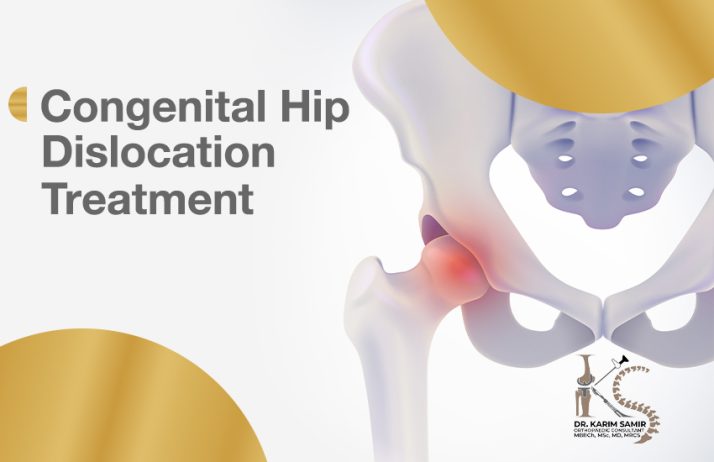Developmental Dysplasia of the Hip (DDH) Treatment: Expert Care with Dr. Karim Samir
Introduction
Developmental Dysplasia of the Hip (DDH), commonly known as congenital hip dislocation, is a condition where the hip joint does not develop properly. If left untreated, it can lead to walking difficulties, pain, and early arthritis. Dr. Karim Samir, a leading orthopedic surgeon in Egypt, provides expert diagnosis and advanced treatment options for DDH, ensuring the best outcomes for children.
What Is Developmental Dysplasia of the Hip (DDH)?
DDH occurs when the ball-and-socket joint of the hip is improperly formed. The severity can range from mild instability to complete hip dislocation. Early diagnosis and treatment are crucial to prevent long-term complications.
Causes and Risk Factors of DDH
Several factors contribute to DDH, including:
- Genetics: A family history of hip dysplasia increases the risk.
- Breech Position: Babies born in a breech position are more prone to hip instability.
- Firstborn Babies: Due to a tighter uterus, firstborns may have a higher risk.
- Female Gender: DDH is more common in females due to hormonal influences.
- Swaddling Practices: Tight swaddling with the legs straight can increase the risk of hip dislocation.
Symptoms of Hip Dysplasia in Infants
Early signs of DDH include:
- Uneven leg lengths
- Limited hip movement on one side
- Asymmetrical skin folds on the thighs
- Audible hip clicks or pops
- Delayed walking or limping in toddlers
Diagnosis of DDH
Dr. Karim Samir uses advanced diagnostic tools to confirm DDH, including:
- Clinical Examination: Assessing hip stability through specific tests like the Ortolani and Barlow maneuvers.
- Ultrasound Imaging: Effective for diagnosing DDH in infants under six months.
- X-rays: Used for older infants and children to assess hip joint formation.
Treatment Options for Developmental Dysplasia of the Hip
Treatment depends on the child’s age and the severity of the condition.
- Non-Surgical Treatment (For Infants Below 6 Months)
- Pavlik Harness: A soft brace that keeps the hips in the correct position, allowing normal development.
- Abduction Braces: Used if the Pavlik harness is ineffective.
- Surgical Treatment (For Severe or Late-Diagnosed Cases)
- Closed Reduction and Hip Spica Cast: Under anesthesia, the hip is manually repositioned, followed by a cast to maintain alignment.
- Open Reduction Surgery: Recommended for older children or complex cases, where the hip joint is surgically corrected.
- Pelvic and Femoral Osteotomies: Bone surgeries to reshape the hip for better stability.
Recovery and Rehabilitation
Post-treatment, children require careful follow-up to ensure proper healing. Dr. Karim Samir provides:
- Periodic imaging to track progress
- Physical therapy to strengthen hip muscles
- Parental guidance on movement and care
Why Choose Dr. Karim Samir for DDH Treatment?
- Expertise in Pediatric Orthopedics: Over 10 years of experience in treating congenital hip conditions.
- Advanced Surgical Techniques: Specializing in minimally invasive procedures for faster recovery.
- Comprehensive Care: From diagnosis to rehabilitation, ensuring the best outcomes.
- Convenient Locations: Clinics available in Cairo and Hurghada for patient accessibility.
Book an Appointment with Dr. Karim Samir
📍 Cairo Clinic: Building 9106 – Street 9 – Mokattam – Cairo.
📞 Cairo Appointments: Call 01020013313 or WhatsApp.
📍 Hurghada Clinic: Capital Medical Center (CMC) – Al-Higaz Street – Next to the Covered Hall.
📞 Hurghada Appointments: Call 01030863088.
